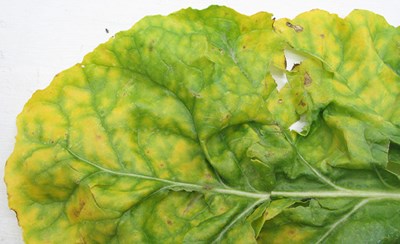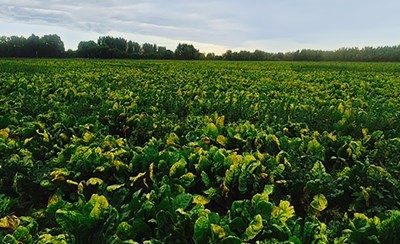Thursday, 4 February 2016
Aphids are the hidden enemy of yellowing fodder beet
I have lost count of the number of enquires I have had recently about these symptoms with most people putting it down to nutrient deficiencies.
A common response is to apply a large amount of nitrogen and potassium fertiliser.
The fact of the matter is, the beet below is not suffering from a nutrient deficiency at all. We tissue-test many beet paddocks for nutrients through Analytical Research Laboratory (ARL), and most come back absolutely fine.
Since seeing signs of infection last year we brought AgResearch on to assist in monitoring the situation.
So what is causing the yellowing?
Using plant diagnostics, the cause of many yellowing paddocks has been confirmed as Beet Western Yellow Virus (BWYV). This is transmitted by aphids, with the biggest culprit being the green peach aphid (Myzus persicae).
Green peach aphid, are often found on the underside of the leaves where they lays eggs in the winter. In spring they hatch and produce stem mothers that give birth to female aphids. These fly to their summer hosts, like fodder beet, where they suck the plant sap and transmit the virus.
The virus persists in the aphids for more than 50 days, and the aphid only needs to feed from the plant for 5 minutes to transmit the disease.
BWYV is extremely hard to control because of its wide host range and persistent aphid transmission, with the minimum inoculation feeding period being 10 minutes.
What are the best defences?
- Insecticide seed treatments (e.g. imidacloprid or thiamethoxam plus tefluthrin).
- Later drilling to avoid aphid flights.
- Avoiding host plant cover crops (e.g. beet, radish, peas, potatoes and wild/weed crucifers like mustard, between drillings).
- Adequate rotations (best defence).
Foliar insecticides can help but they have to be timed right; this year I was finding aphids underneath leaves in the middle of November. A good indication of whether your beet crop has aphids is the presence of ladybirds, as they are a natural predator. Where possible, I would advise using an insecticide that does not kill your friends!
Unfortunately there is a huge amount of resistance to insecticides with the green peach aphid globally. While it is not confirmed in New Zealand yet, we should take every precaution to reduce the potential of resistance.
Your best form of defence is correct crop rotations, and sowing insecticide-treated seed.
Fodder beet seed is generally coated to allow precision sowing, which only has a fungicide treatment. Ensure the seed you are sowing has Combi Coat, which contains both a fungicide and insecticide to reduce your risks of virus infection.
Starting with the correct paddock choice (with no-host species prior to fodder beet) and using insecticide-treated seed, will put the odds significantly in your favour.


